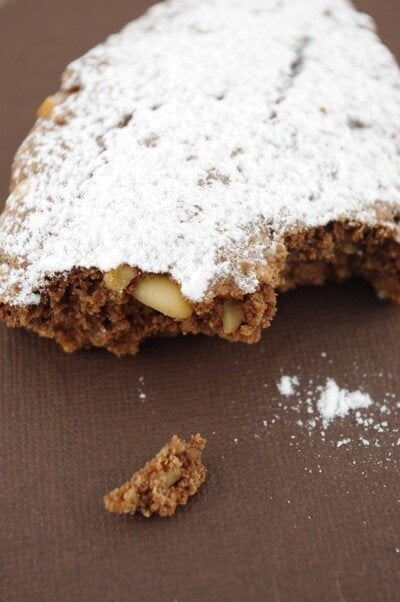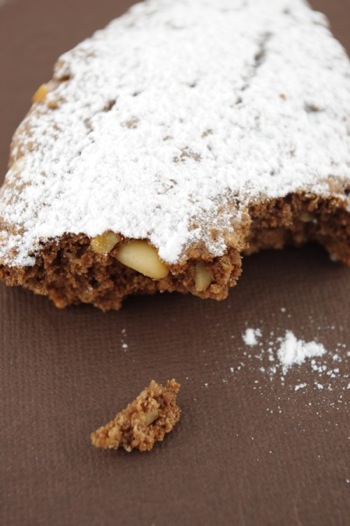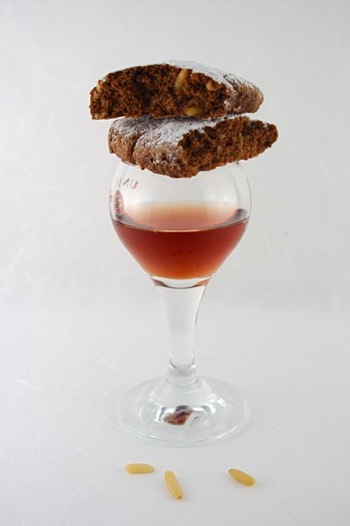
For much of the Western world, the cool, golden days of autumn mean Halloween, grinning jack o' lanterns and pumpkin pie, tiny ghosts, goblins and fairy princesses digging into so many paper bags heavy with candy and caramel popcorn balls or bobbing for apples amid the crunch of fallen leaves. For Italians, this season brings mushroom risotto and pumpkin ravioli, truffles, grapes and The Day of the Dead. Celebrated on November second following All Saint's Day (Ognissanti) on November first, All Souls' Day, or Day of the Dead (La Commemorazione dei Defunti or il Giorno dei Morti) is a day many set aside to remember and commemorate the dead. Of course, Halloween was born of this holy celebration, but in Catholic countries such as Italy, tradition still holds and on All Souls' Day Italians, arms heavy with chrysanthemums, visit cemeteries, placing the flowers on the graves of loved ones and celebrate accordingly.
Italians are a religious and superstitious people, often melding the two together into intriguing rituals and endearing, wonderful, long-lasting traditions. The long ago pagan and Roman rituals of exorcising malevolent spirits and of appeasing the dead on certain days of the year were embraced by early Christians, eventually evolving, alongside All Saints' Day, into All Souls' Day, a day of remembrance and prayer. The celebrations and modern-day rituals surrounding these two holy days are continued in Italy where it is said that the souls of dead relatives and loved ones return to Earth to visit those they've left behind. The living welcome their defunct, visiting their graves, offering prayers and flowers and burning candles to their memories. In some homes, children wake in the morning to find cakes and sweets left for them overnight by visiting spirits.
I love holiday time in Italy. As each special festa rolls around, her well-kept secrets pop up unexpectedly, her hidden treasures saved only for special occasions, just when you've forgotten all about them. Wander into the corner bakery looking only for warm bread rolls for dinner and you are surprised to find the shop all dressed up for the next celebration. Trays of treats appear as from nowhere, elegantly wrapped Pandoro or Panettone (brioche-type cakes) at Christmas, tortelli, chiacchiere ("chatterboxes") and frittelle fried snacks for Carnevale piled high on white paper doilies under showers of white icing sugar, dove-shaped Colomba for Easter. And then they disappear as quickly as they appeared, making way for the next. To each holiday her special creation and All Souls' Day, The Day of the Dead, is no different.
Pan dei Morti, or Bread of the Dead, are fabulous cookies, dark, moist, very dense and chewy that appear much too briefly in Italian bakeries during the autumn season, showing up shortly before All Saints' Day and disappearing again after All Souls' Day. Pan dei Morti is an intriguing confection, a lozenge-shaped cookie smothered under a layer of white powdered sugar like snow covering the rich, dark earth, a pastry infused with a multitude of flavors; cocoa, cinnamon, nuts, wine weave in and out of each mouthful, tickling your taste buds and then vanishing, making way for the next, each flavor distinct yet balanced and blended together into one surprising taste. And as you chew, the crackle of the ground cookies and figs and the crunch of the pine nuts remind you of dead men's bones, a sweet reminder of loved ones long gone.
PAN DEI MORTI or BREAD OF THE DEAD
Said to be based on an ancient Etruscan recipe, this particular recipe is a specialty of the Lombardia region of Italy.
14 oz (400 g) total of dry, sweet cookies such as crunchy ladyfingers/boudoirs (10 ½ oz/300 g) and Pavesini (3 ½ oz/100 g)
3 ½ oz (100 g) dry amaretti cookies
4 ¼ oz (120 g) blanched whole almonds
4 ¼ oz (120 g) dried figs
2 cups (250 g) flour
1 ½ cups (300 g) sugar
scant ½ cup (50 g) unsweetened cocoa powder
1 tsp baking powder
1 tsp ground cinnamon
¼ tsp ground nutmeg
pinch salt
4 ¼ oz (125 g) whole pine nuts
6 large egg whites
3/8 cup (100 ml) vin santo or other sweet dessert wine (the wine can be replaced with water if you must, but the wine adds a wonderful earthy flavor to the cookies)
powdered/confectioner's sugar for dustingUsing a robot mixer, finely grind all of the cookies and amaretti and place in a very large mixing bowl. Finely grind both the almonds and the figs and add to the cookie powder in the bowl. (The damp figs may clump together, just rub the clumps into the dry ingredients to break it up.) Add the flour, sugar, cocoa powder, baking powder, cinnamon, nutmeg, salt and whole pine nuts to the ground ingredients and toss until completely blended.
Pour the egg whites and the vin santo or dessert wine over the dry ingredients and blend until all of the dry ingredients are moistened. Scrape out onto a floured work surface and knead quickly until it you have a smooth, well-blended ball of cookie dough.
Preheat the oven to 350°F (180°C). Line baking sheets with non-stick parchment paper.
Slice the ball of dough in half and then each half into about a dozen even pieces, each weighing about 3-3 ½ oz (90-100 g). Shape each piece into a lozenge, long and flat, approximately 4 ½ - 5 ½ inches (12-14 cm) long and approximately 2 ½ inches (6 cm) wide, wide in the middle narrowing to a point at each end. Place the lozenge-shaped cookies on the baking sheet leaving a little space between each. Bake for 35-30 minutes until slightly puffed, a dull brown color and set. Lift one up carefully and check that the bottom side looks cooked. Do not overbake or the burned edges will be too hard.
Remove the cookies to cooling racks and allow the cookies to cool completely. Once cooled, sift powdered/confectioner's sugar generously to cover the cookies.
These cookies are best eaten fresh, the day baked although they keep well for several days. They are dense, chewy, moist cookies with the crackle of the ground cookies and the crunch of the pine nuts to remind us of dead men's bones.
Jamie Schler lives, eats and writes in France. To read more of her work visit Life's a Feast.


